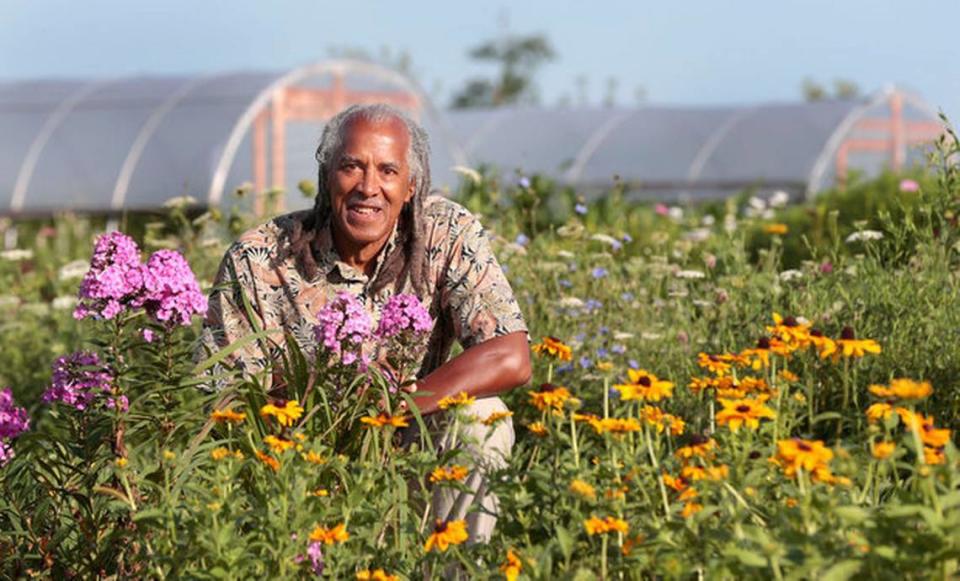Your own back yard (stop with the lawn chemicals!) can be a starting point this Earth Day
Earth Day has come once again with that same celebratory ardor and existential dread it brings every year, our love of nature sprinkled with more elemental guilt about what we’re doing or not doing to save the environment.
But I’ve been reading a book called “Nature’s Best Hope: A New Approach to Conservation that Starts in Your Yard,” by Douglas Tallamy about the ways we are able to help and support nature in our own backyards, some simple steps that are within reason: Stop using chemicals on your lawn, put in some native plants, plant a native tree. That way, you’ll sustain more insects, that pollinate our food sources, which will attract more birds, and strengthen biodiversity.
I asked some local experts for other small ideas in our back yards that can make a big impact. Jim Embry is a longtime community activist who sees gardening and agriculture as a way to solve environmental and food justice issues. He said start by growing something, whether it’s a tomato plant on your apartment balcony or an entire bed of native flowers.
“Wendell Berry said that eating is an agricultural act, then we’re all involved in agriculture, but we’re not being reciprocal,” Embry said. “It’s a way to teach leadership, how people can be agents of change — they can go out and plant a tree. If you want to be revolutionary, get involved in gardening.”

Amy Sohner, executive director of Bluegrass Greensource, which has many, many suggestions on all kinds of environmental improvements, doesn’t bother with the fruitless task of telling a lawn-obsessed culture not to have a perfect lawn. Instead she asks people to consider that everything we put on the ground ends up in our water.
“So for the people who want a really lush lawn, we talk about how they can do that in a way that has the least impact on water quality,” she said. “You don’t need bags and bags of fertilizer, and you only need to do it in the fall, not the spring.”
But if you put fewer chemicals on your lawn, you might see some violets or spring beauties in the grass, which are both beautiful and provide early season food for insects like bees.
“I think it’s very important to recognize the native plants in our city that have spontaneously occurred and give them the respect they deserve,” said John Michler, owner of Michler’s Florist and Greenhouses. “Violets and spring beauties are examples of pre-European civilization plants that have lasted in our landscape and we ought to appreciate them.”
Hackberry trees, for example, are natives that pop up so commonly that some people think of them as trash trees. “But the hackberry is providing seeds for the migrating warblers, and the sweet buds are eaten by squirrels,” Michler said. “They’re not as grand as an oak tree, but they’re here and provide habitat.”
Speaking of trees, just plant one. A native one, preferably. Greg Doyle, who serves on the board of the nonprofit Trees Lexington, said trees are one of the best ways to fight climate change.
“It takes a while for a tree to get up and running, but the carbon sequestration they do is well known, and each year it gets better and better,” he said. “The really big old trees with large canopies do so much, and native trees can house native insects and birds.”
Tallamy’s book has many other good ideas, like covering window wells so that small creatures like frogs and toads don’t get trapped in them, or stop spraying for mosquitoes because it also kills other, more beneficial insects. He also echoes something that Sohner mentioned, which is talk to your friends and neighbors about steps you take.
“Small changes can have a huge impact,” she said, “so talk about what you’re doing and share your ideas.”

